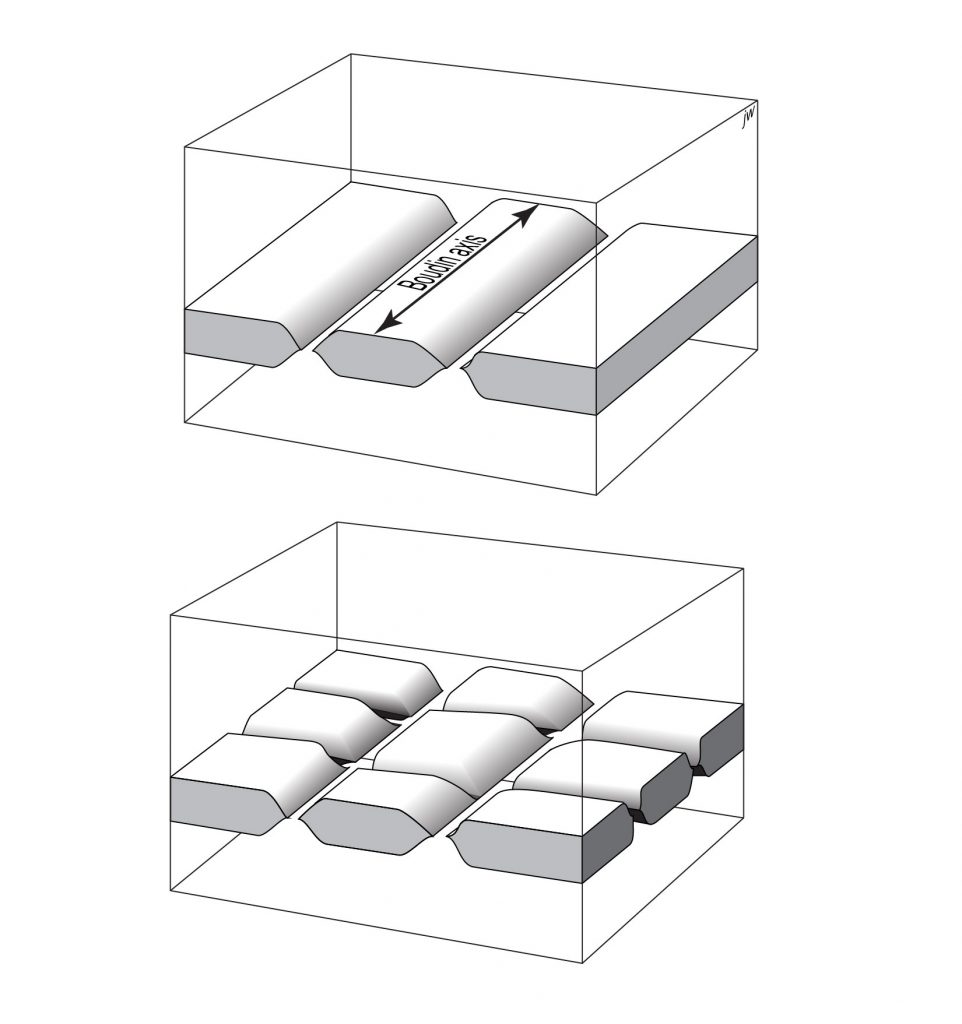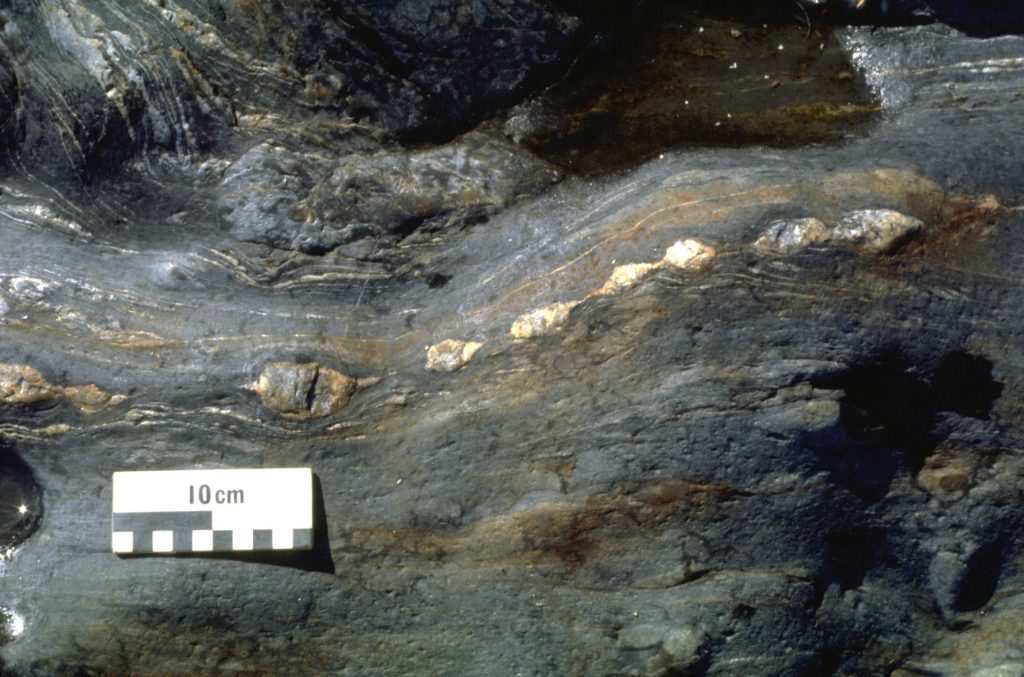F. Boudinage

Buckle folds are formed when strong (or ‘competent‘) layers of rock are shortened. What happens when strong layers are extended? Typically the layers start to thin at points of weakness (a process known in engineering as necking) producing a structure called pinch-and-swell. As pinch and swell develops, the thin regions can separate, leaving a structure that looks like a string of sausages in cross-section. The remnants of the original layer are called boudins (a French word for a type of sausage), and the process is known as boudinage.
Although boudins are in many ways the extensional counterpart of folds, the terminology of boudinage is much less well developed than that of folds. In part, this is because layers undergoing boudinage do not affect adjacent layers in the same way, so that boudins are less likely to be harmonic than folds. Thus, although boudins do have axes, it is rarely possible to define an equivalent of an axial surface for boudins.
Sometimes layers undergo extension in all directions simultaneously, producing a more three-dimensional boudinage structure described as chocolate tablet structure. It is also possible to find examples of layers that have undergone both folding and boudinage during progressive deformation.

A general term for resistance to stress.
Process whereby layers start to thin at points of weakness during extension.
A structure formed by a layer that has separated into pieces, typically as a result of extension.
The process of formation of boudins.
Boudins that are roughly equant in plan view, produced by extension of a layer in all directions

